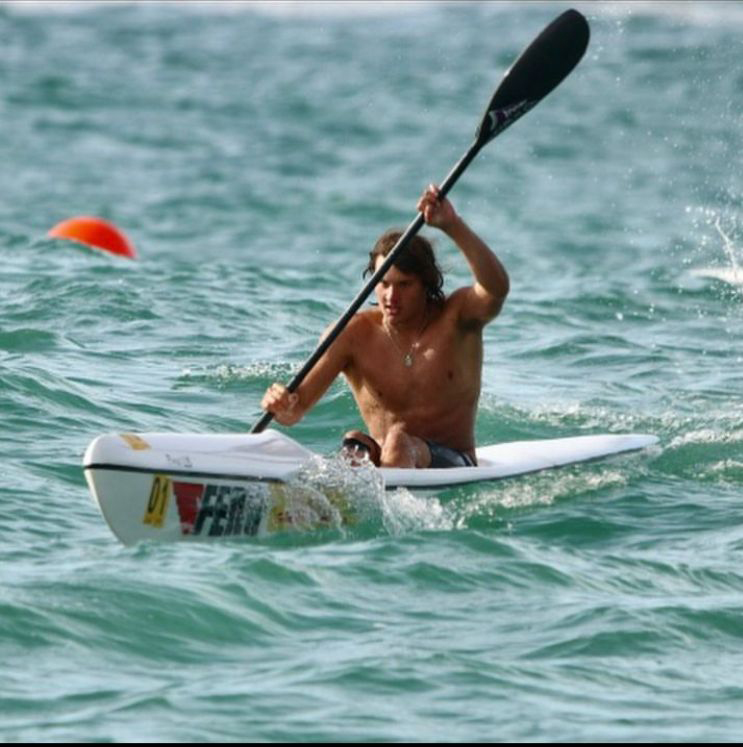click to dowload our latest edition
CLICK HERE TO SUBSCRIBE TO OUR NEWSLETTER


Published
2 years agoon
When 18-year-old Capetonian Naor Lombard surf skied across the finish line at the same time as New Zealander Jayden Murphy in the final of the youth men’s surf ski event at the 2022 Lifesaving World Championships, he looked around with uncertainty.
He wasn’t sure which of them had won gold at the coastal town of Riccione, Italy, on 29 September. The winner would be decided via a photo finish, but looking at the footage, the judges couldn’t separate Lombard and Murphy.
“It was declared a tie, and we both took home a gold medal,” Lombard says. “It felt incredible. It was crazy. I didn’t expect to win it because it was my first world championship. I didn’t know what my competitors would be capable of.
“As a South African, we hear about how the Australians train non-stop. They receive a lot of funding for the sport, and it’s huge there. It’s kind of intimidating at first to go up against these guys. They’re all pretty much a head taller than me. I was just there for experience. But when I won, it was amazing! I even cried when singing the national anthem.”
Behind Lombard and Murphy came Australian Jake Morris. Lombard’s fellow South African, Levi Trevor Mayes, just missed out on a medal, coming fourth out of the 16 surf skiers from 11 different countries competing in the final.
Earlier that day, Lombard started the event by coming fourth out of 11 in his preliminary round before placing third out of 12 in his semifinal.
Lombard, who trains at Clifton and other beaches in Cape Town, put in many hours of hard training leading up to the event. “On some days, I did four sessions a day. I would swim in the morning, then I would do gym and a bit of endurance training like running. I also did a lot of paddling, but surf ski paddling was the hardest training I did.”
Surf ski is an event that falls under the sport of lifesaving. “I wasn’t training specifically for surf ski. I was training for the hardest event in lifesaving, the Ironman [triathlon], in which you do the board rescue, the swim, and the ski. Ski was my strongest discipline.”
Lombard took up lifesaving when he was about seven years old. “One day, I saw nippers training. Way before you start practising as a lifeguard, nippers is focused on the early stage, just like playing around in the water. There are competitions for it as well, but it’s nothing serious. It looked like lots of fun, and I decided to give it a go.”
Lombard has performed several rescues as a lifesaver.
When he was only 13 and still a nipper, a 15-year-old had a stroke in the ocean in Big Bay, Cape Town.
“I put him on my board, and I paddled him about 300m back to the beach. Then I ran to call the lifeguards who got the oxygen and assisted him further.”
In a more recent incident at Big Bay, a group lost their paddle while in the sea and were caught up in a current under the darkening sky. Fully clothed, Lombard jumped on a surfboard with the devotion of a dolphin jumping out of the water, and paddled about 500m out to them. They grabbed onto Lombard’s paddle, and he managed to save them with the help of some friends.
Lombard came second in the run, swim, run and third in the surf swim at the African Lifesaving Championships earlier this year while competing for the Proteas senior team.
Surf lifesaving started in Australia before spreading to South Africa in the 1930s. The first world championship was held in Durban in 1974.
Surf skiers sit in surf skis while paddling at high intensity and as often as possible to ride waves. Surf skis, sometimes called sit-on-top kayaks, are generally the longest of all kayaks. They are designed for speed on open water, and are most popular in South Africa and other warm coastal countries such as Australia – where the sport originated – New Zealand, and Hawaii.
An early version of the surf ski was used by Harry McLaren and his brother, Jack, in 1912 around their family’s oyster beds on Lake Innes near Port Macquarie, Australia.
Lombard says surf ski and lifesaving have grown in leaps and bounds over the past three years in South Africa. “Just at our club in Clifton, we’ve gone from having about 40 active competitors and members to now having about 300. The COVID-19 pandemic was a big hit. It slowed down the sport because people didn’t want to travel, but now we have a lot of competitors. At the South African Championships, the participants were in the thousands.”
Also a lifeguard, Lombard says lifesaving is a sport like no other. “We train not only for the sport but to improve our ability to save lives. When it comes to doing lifeguard duty on the beach or just doing whatever you’re doing on the beach and you see someone who needs help, you’ve got to go as strong and as fast as you can to get to that person and rescue them. It’s a way of life.”
Lombard says to compete in lifesaving at any level, you must attain a lifeguard qualification. “From the age of 14 to 16, you get your junior lifeguard qualification. When you turn 16, you have to upgrade to a lifeguard award. Then you can work as a lifeguard.”
Lombard, who finished his online schooling through GED (an internationally-recognised high school equivalency) in April this year, loves free diving (descending below the water’s surface while holding your breath) and surfing in his spare time. “When I’m not training and not on duty, I love going for a free dive along the coast,” he says.
